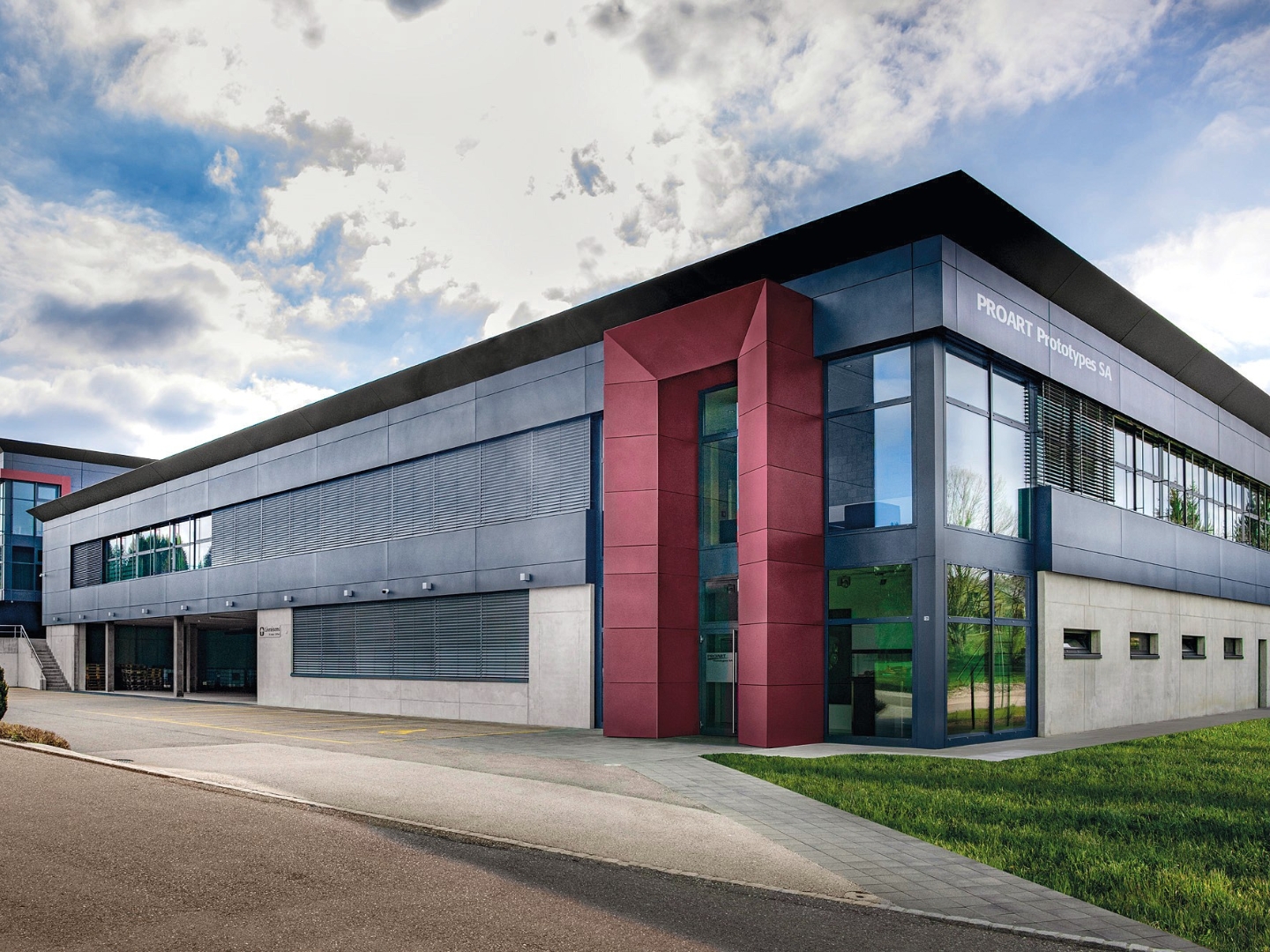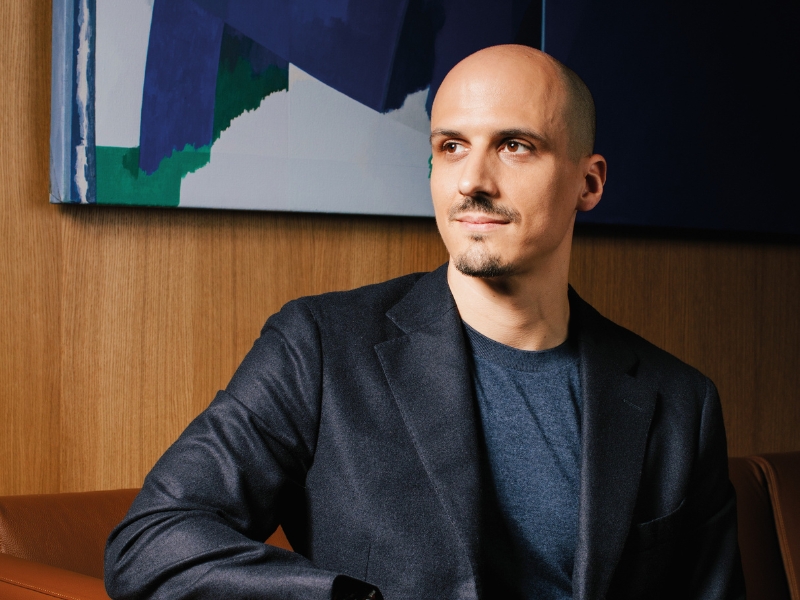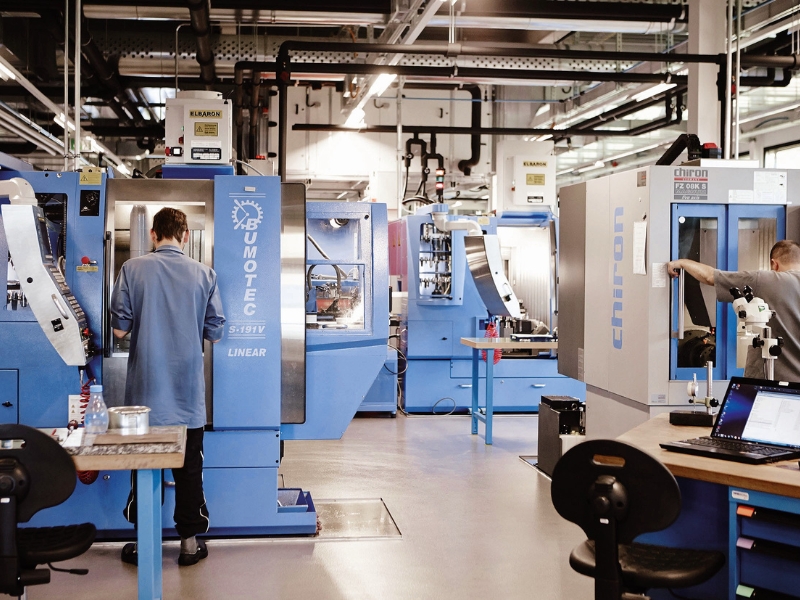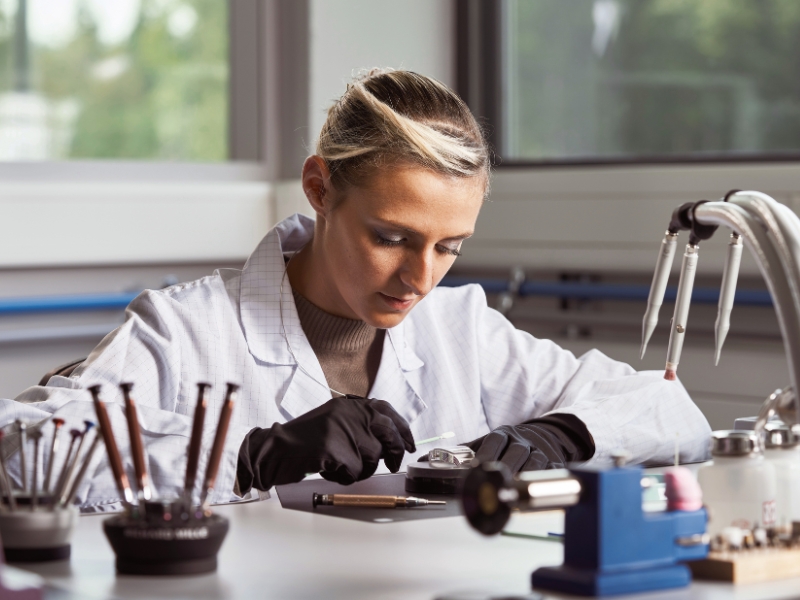
ProArt in Les Breuleux produces Richard Mille watch cases, including the famous tonneau-shaped ones, and components such as baseplates and bridges (All photos: Richard Mille)
The 2½-hour drive from Geneva to Les Breuleux — in northwest Switzerland where high-end watchmaker Richard Mille’s facilities are located — was pleasant and scenic. Small cottages lining winding roads, snow-capped mountains on the horizon, lovely sights, wide open spaces — everything was brought to life on the clear, sunny day.
Les Breuleux, at more than 1,000m above sea level, is in the serene and unspoilt canton of Jura and home to the maison’s watchmaking facilities ProArt SA and Guenat SA Montres Valgine. During a recent visit, this writer was able to note how Richard Mille has managed to position itself at the pinnacle of watchmaking, despite having been around for only 24 years, in stark contrast to other watchmakers, some of which have centuries of tradition behind them.
And the brand has gone from strength to strength, managing to control 3% of Swiss watches’ estimated retail market share, according to the Morgan Stanley LuxeConsult Swiss Luxury Watch Report 2024.
The report has it that the maison, which focuses on the ultra high-end segment of watchmaking and production, was sixth on the list in terms of revenue, having sold about 5,700 watches in the year, for an estimated turnover of CHF1.55 billion (RM7.77 billion). The average retail price (excluding VAT) of a Richard Mille watch was a staggering CHF271,930, or about RM1.36 million.
To put things in perspective, Rolex is reported to have sold 1.18 million watches and made CHF10.58 billion (RM53.03 billion) to make the top spot in terms of revenue, with an implied average retail price (excluding VAT) pegged at CHF15,451 or RM77,439.
While none of the employees on hand at the two Richard Mille facilities could be quoted, sales director and son of the founder, Alexandre Mille, when asked about the requisite investment on a watch, said: “[The capex] is a lot … the duration taken to build the watch, the back and forth, and the time our designers spend on the watch. You talk about three or four years of development — that is the type of costs we are talking about.
“[There is] no compromise on our part, our capex is huge and there is no limit. [Basically] when you have a budget, specific deadline or targeted price, you start to compromise … We don’t want to do that if we want to make the watch we dream of,” he explains.
alexandre_mille.jpg

Two facilities
Richard Mille’s strategy of crafting technical marvels without any trade-offs was evident at ProArt and Valgine, as its watchmakers constructed and built pieces from scratch and put them under vigorous stress tests. The generally sensitive and fragile tourbillon versions are able to withstand punishment and durable enough to be worn for extreme sports. (Owners are encouraged to wear them for all occasions, even daily, rather than keeping them in a safe.)
While ProArt produces Richard Mille cases, including the famous tonneau-shaped ones, and components such as baseplates and bridges, which are made with titanium, composites and precious metals, Valgine focuses on making movements, having been in operation for more than a century. (Shareholder Dominique Guenat is the third-generation owner of Valgine.)
It was fascinating observing the intricate watchmaking process — the movement being assembled and put together under a microscope, the titanium cases crafted and polished by hand, the construction of the baseplates and so on — which was followed by traumatic stress tests that involved hammering and dropping. Witnessing a ticker that costs millions being punished so violently, literally being roughed up, was disturbing.
Then again there are F1 drivers who have been involved in huge accidents at high speed and come out of charred vehicles with their Richard Mille intact, without a scratch and working fine.
What was most striking was the attention to detail, and with a number of the watches being crafted in skeleton casing, the handiwork was laid bare for all to see. To illustrate this point, the recently launched RM 43-01 is made up of 514 components within a titanium baseplate.
While one may expect the two facilities to be staffed by elderly men — perhaps in their seventies, with grey hair, glasses and leathery wrinkled skin — we noticed interns who were barely out of their teens, ready for a career in this field. The employees at both facilities had a spring in their step and walked with purpose. With high levels of passion, they were not hard-pressed or rushed in any way, as that could jeopardise the products’ final quality and precision.
machining.jpg

People + branding
Besides being top-notch in their chosen profession, the artisans at Les Breuleux are also attuned-to-nature, outdoorsy types, and often have picnic lunches in the great outdoors.
The surroundings of both the facilities make this lifestyle possible, and add to their quality of life. In the late afternoon, when some of us were a little knackered from jetlag and the early drive up to heart of the Franches-Montagnes, one of the employees offered us apple juice he had pressed in the morning.
“If I had known you were coming, I would have brought some schnapps or Calvados (a French brandy made from apple or pear cider),” he said nonchalantly. Asked further, he added, “Yes, home-made as well.”
Many of the staff live within 10 minutes of the manufacture and everyone knows each other as well as their families, which adds to the spirit of togetherness. They take great pride in being in the employ of Richard Mille; the sense of camaraderie is evident and the passion for what they do is unmistakable.
Having discovered the inner workings of the brand, one eventually understands the price tags on its wares.
Teaming up with talents and ambassadors, who are all renowned in their respective fields and have attained a considerable amount of fame, is another indication of the company’s target market.
Its partners include F1 drivers Felipe Massa, Fernando Alonso and Alain Prost; professional sportscar racer Aurora Straus; golfers Gerry Lester “Bubba” Watson, Cristie Kerr, Diana Luna and Jessica Korda; athletes Akani Simbine and Nafi Thiam; cycling phenomenon Mathieu van der Poel; snowboarding champ Ester Ledecká; mountain climber Charles Dubouloz; footballer Didier Drogba; tennis great Rafael Nadal; actors Tan Sri Michelle Yeoh and John Malkovich; and producer and singer Pharrell Williams.
As Alexandre put it, “These are not people you can go to and simply say, ‘Hey wear this watch’”, as they have to believe in the brand and share the same values.
watchmaker.jpg

Quality first
Alexandre explains the philosophy anchoring the house, “Our marketing calendar is never dictated by deadline, or any event or whatever. We do it when the watch is ready. We had an issue with the RM 43-01 last year, and made the decision to push back [the launch] to early 2025.”
Richard Mille’s first crossover with Ferrari produced the RM UP-01, among the thinnest watches in the world at 1.75mm. Work on the movement commenced five years prior to its release in July 2022, according to Alexandre.
The RM UP-01 went through more than 6,000 hours of development and laboratory testing, and is crafted out of grade 5 titanium, a highly corrosion-resistant and remarkably rigid alloy (90% titanium, 6% aluminium and 4% vanadium). It can withstand accelerations of over 5,000g in total, despite the strap weighing only 30g.
To create such a slim record-breaker, a function selector was incorporated into the bezel, at between 10 and 11 o’clock, which allows the selection of either the winding or hand-setting function, via the rotation of the crown.
Setting the time or winding the barrel is made possible by turning the second crown located between 7 and 8 o’clock. The RM UP-01, much like the RM 43-01, is limited to 150 pieces and priced at US$1.88 million (RM8.29 million) when it was launched.
rm_43-01.jpg

The recently unveiled RM 43-01 Tourbillon Split-Seconds Chronograph Ferrari is available in two models — micro-blasted and polished grade 5 titanium with a Carbon TPT case band; and full Carbon TPT, a lightweight and durable thin-ply composite used exclusively by Richard Mille. Retailing at CHF1.35 million (RM7.02 million) and CHF1.15 million (RM5.98 million) respectively, each variant has only 75 pieces.
Designed in collaboration with long-time partner Audemars Piguet Le Locle, the RM 43-01 is a manual winding tourbillon, with a split-second chronograph function that facilitates timing two separate occurrences that start simultaneously but end differently. An apt example is how fast two separate vehicles cross the finish line.
To those not in the know, two such intricate complications — the tourbillon is considered the zenith of watchmaking capability, while the split-second chronograph denotes the highest levels of craftsmanship — are seldom found in one timepiece.
At 42.9mm wide, 17.1mm thick and 51.2mm long from lug to lug, the RM 43-01 stands out, hugging the wrist beautifully via rubber straps with a titanium double-folding clasp. It has an impressive power reserve of up to 70 hours, which can be tracked using the gauge at 11 o’clock. Information about the mainspring’s tension is noted at 1 o’clock while the function indicator at 3 o’clock shows whether the watch is in the winding, neutral or hand-setting position.
The movement is housed in a skeleton case with design language honed in the crucible of Maranello, making it a feast for the eyes.
Also worth noting is the RM 43-01’s Ferrari heritage, which has obvious similarities with models such as the Formula One racer SF90, conceptualised and constructed by Scuderia Ferrari for the 2019 Formula One World Championship. Other Ferrari-inspired components on the RM 43-01 include markers that match the shape of the super car’s intake, pushers that echo the taillights of an SF90 Stradale and a small Ferrari logo plate in the lower left corner of the dial that is the same shape as the endplate on the wing of a Ferrari 499P.
This article first appeared on Apr 28, 2025 in The Edge Malaysia.


